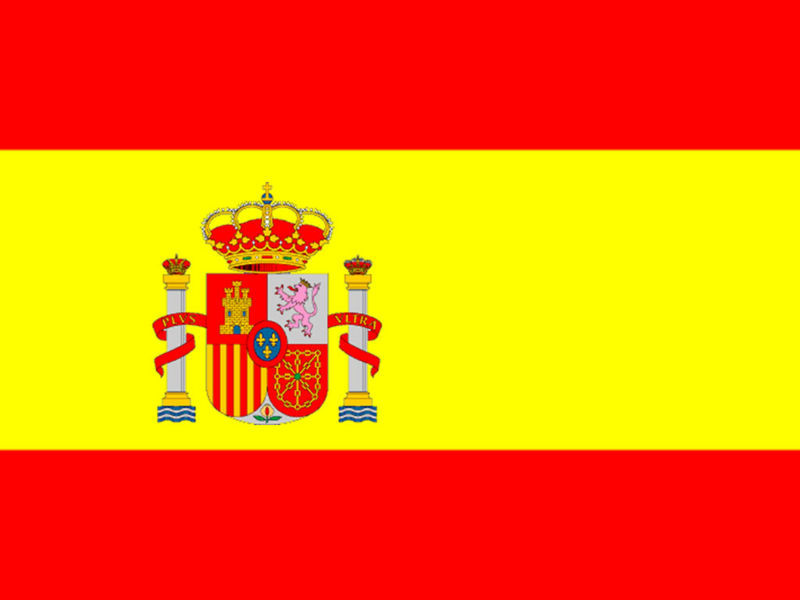The Spanish Flag
Hi everyone. I think this blog entry of mine could be very interesting to you, since we live in a country where we often don't know about important stuff.
The other day I was talking to my boyfriend, who's Brazilian, in our room, and we were both looking at our countries' flags, which were hanging on the wall. We'd put them up there to decorate the walls a bit, since they were very empty and I don't have much money to spend on paintings and the like, and also because I think it's a comforting thing to have in your room if you're spending time away from your home country. :)
My boyfriend was telling me about what each individual part of the Brazilian flag symbolised, and he then asked me what the meaning behind the Spanish flag was. You should have seen my face when I realised that I knew next to nothing about my own country's flag!
After this incident, I thought it would be interesting for Erasmus students and also other Spaniards who maybe don't know what our flag means if I wrote a post explaining in detail where our flag comes from.

Starting with the colours, we all know that the Spanish flag consists of a red stripe at the top and at the bottom, and one yellow stripe in the middle, all horizontal. The yellow stripe is double the thickness of the red ones, and this is why it's known as 'la rojigualda' ('the red and yellow flag', sometimes used as a synonym for the adjective 'Spanish').
From what I've seen, there are numerous theories explaining the significance of these colours, but the most logical is that the red represents the blood spilled by the Spanish on their conquests and in defense of their country. The yellow, or gold, represents the riches the Spanish acquired on these conquests.
The coat of arms is formed of various parts:
- The first part is the crown we can see at the top, which symbolizes the Spanish monarchy. Perhaps everyone already knows this, but for those of you who don't, this part of the coat of arms is called the 'mark of honour'.
- The second part is the two white columns we see on either side of the coat of arms. Red ribbon can be seen winding around these with the motto 'Plus Ultra' written upon them, which means 'further beyond' in Latin. These columns were incorporated into the Spanish coat of arts by Charles I, and they symbolise the Pillars of Hercules, the promontories which flank the entrance to the strait of Gibraltar; this is also the reason for the waves at the columns' bases.
If you look closely, you'll see that there's a golden crown on top of each column, which is the symbol of the Holy Roman Empire, a reference to our country's history as part of this empire.
- The third part is the largest: the square in the centre, divided into four smaller quarters. These represent the Spanish medieval kingdoms.
- The first, beginning in the top left hand corner, is the shield of the Kingdom of Castille, symbolised by a castle. This will probably be the one most familiar to you, as it features in several films.
- The second, in the top right hand corner, is the shield of the Kingdom of Leon, logically symbolised by a lion wearing a crown.
- The third, in the bottom left hand corner, is the shield of the Kingdom of Aragon, symbolised by red and yellow horizontal lines.
- The final shield, in the bottom right hand corner, is the shield of the Kingdom of Navarre, symbolised by chains.
Beneath the shield, there is a a white area featuring a small flower. This is called the 'Entado', and the flower is in fact a pomegranate (in Spanish a 'granada'), which of course symbolises the Kingdom of Granada.
Finally, in the centre of the coat of arms, the small shield with a blue background is called the 'Escusón' and is decorated with three fleur-de-lis in its centre. Especially known from the former coat of arms of France, these reference the coat of arms of the House of Anjou-Bourbon, of which the current Spanish royal family are members.
Photo gallery
Content available in other languages
- Español: Bandera de España
- Italiano: La bandiera della Spagna
- Français: Drapeau d'Espagne
- Português: Bandeira da Espanha
- Polski: Flaga Hiszpanii
Want to have your own Erasmus blog?
If you are experiencing living abroad, you're an avid traveller or want to promote the city where you live... create your own blog and share your adventures!
I want to create my Erasmus blog! →




Comments (1 comments)
The ongoing national Flag of Peru was officially embraced on February 25, 1825, and changed in 1950. The flag comprises three equivalent, vertical groups of red (raise side), white, and red with the crest focused in the white band. The crest includes a safeguard bearing a vicuna (addressing fauna), a cinchona tree (the wellspring of quinine, implying verdure), and a yellow cornucopia pouring out coins (meaning mineral riches); red reviews gore for freedom, white represents harmony.